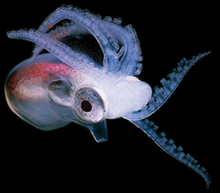
So in an effort to re-examine some of the lab’s old array data, I made a fairly simple R script to plot the change in expression of competence genes, putative purR-regulated genes, and genes involved in utilizing secondary sugars. We no longer have our expensive license for fancy-pants software, but all I needed to do was some arithematic to columns, and then find the rows of interest, so it’s R-tastic!
I looked at a time course dataset, in which expression was monitored over the course of growth in sBHI and after transfer to MIV. I also looked at a single one-off array comparing purR- to purR+ strains growing in late-log +cAMP.
Here’s the results for the time course. All values are normalized to the first time point. Blue are sBHI timepoints, and red are MIV timepoints. MIV cultures were split from the sBHI cultures at t=0 minutes.



It’s pretty clear that the competence genes are strongly induced in MIV, but are also induced in late-log phase, as expected. Putative PurR-regulated genes are strongly and quickly induced in MIV, indicating that purine pools are quickly depleted, and the purine biosynthetic pathway is activated quite quickly (much faster than the competence genes, it appears). The “non-PTS” genes (several genes induced by CRP when cAMP levels are high) appear to be briefly weakly induced in MIV, as well as being weakly induced in late-log.
Here’s the same sets of genes plotted as the ratio of expression in purR- vs purR+ cultures (late-log, induced with cAMP). Here, I plot the ratios from both array elements for each gene (open and closed circles) and colored them just so they’d be easy to see. Also note, I normalized everything to the median ratio to account for dye effects (under the assumption that the median gene is not PurR regulated). Again, strong induction of the putative purine-regulated genes, a weak repression of the competence genes (presumably due to purine repression), and not much happening with the non-PTS sugars.



Conclusion: Nothing we didn’t already suspect, but it’s good to see that things are behaved as expected. One point of note is that the hypothesized regulation of rec2 by PurR isn’t something that jumps out of this, but if purine repression acts upstream of rec2, we wouldn’t be able to see the effects of deleting PurR here anyways… (continued...)





